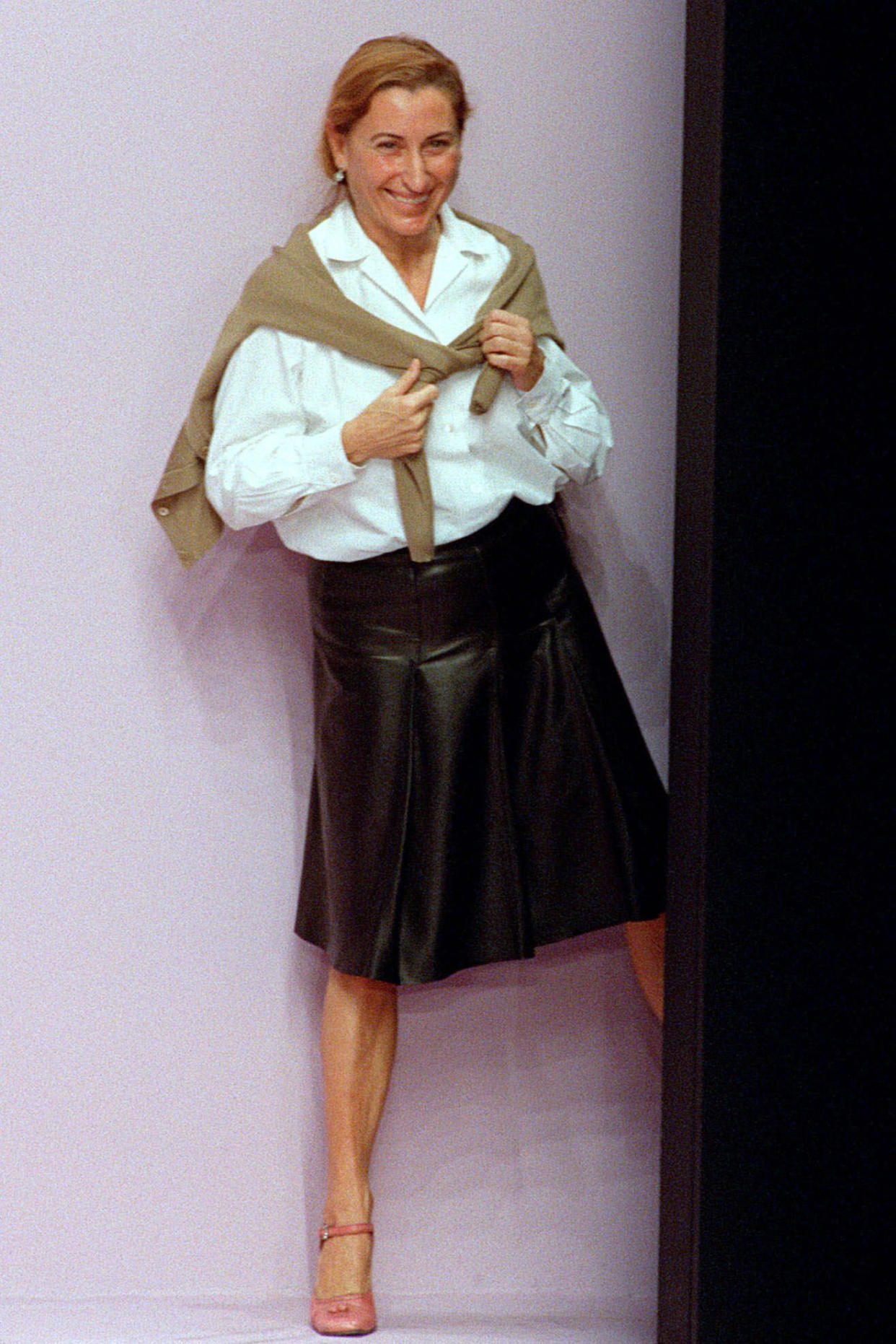Bridget Foley’s Diary: The New Prada

Click here to read the full article.
Milan ended with a humdinger — the news that Raf Simons is joining Prada as the brand’s co-creative director with Miuccia Prada. The rumor mill had buzzed about the possibility for some time (and WWD reported in late January that it may be happening). Now, the entire industry will be rapt to see how this remarkable creative partnership unfolds, starting with the designers’ first joint-effort collection, for spring 2021.
Despite Prada’s protestations otherwise, you don’t have to be Nostradamus to see that she and her husband/chief executive officer Patrizio Bertelli are readying the house for the moment, whenever it may come, that she decides she’s had enough and wants to scale back. But for the foreseeable future, the focus is on Prada and Simons committing to an unprecedented creative partnership. “In theory, it’s forever,” Prada said of its anticipated run. They both recognize their pairing as a momentous union, as indicated in the press release that trumpeted it. “It opens a new dialogue, between designers widely acknowledged as two of the most important and influential of today,” the statement read, while calling the move, “a questioning of creative conventions.”
More from WWD
It is surely that. Typically, we think of great creativity as emanating from a single source; it’s difficult enough to try to grasp how a genuinely creative mind works on its own. Equal creative partnerships are all the more fascinating, even when the two parties embarked on their careers together, such as Domenico Dolce and Stefano Gabbana or Jack McCollough and Lazaro Hernandez. There’s a mystery to the transformation of creative thinking into the actual work produced — the breakdown of responsibilities, the internal power dynamic, the Lennon-McCartney of it all.
In this case, two major, world-renowned creatives with bold, long-established aesthetics and healthy egos are partnering up to create a single, unified vision for one of the most storied names in fashion, “with equal responsibilities for creative input and decision-making.” One’s an owner, one’s not. How will they gel? Will their working method be clinical or organic? Who comes up with the initial brief? Can the collaborative process possibly be as simple as Simons described during the Sunday press conference at which the news was revealed. “There’s more strength when two creatives believe in it, two creatives love it. It has more strength than when one believes in it. It’s as simple as that. When we both believe in it, we’re going to do it. When one of us doesn’t believe in it, we won’t do it,” he said.
Certainly, Prada should prove a better fit for Simons than either Dior or Calvin Klein. At Dior, he sometimes seemed to want to break fully free of archival constraints, and at Calvin Klein, there was probably too much of a culture clash from the get-go.
However it develops, the Miuccia-Raf relationship will be fascinating to watch, and will surely bring something new and compelling to fashion. Both designers are curious thinkers and natural provocateurs who use their runways as platforms for cultural commentary — but not at the expense of creating important fashion. Both pure creators, they believe steadfastly in the sanctity of innovation and creativity. Both are also savvy students of fashion history, and have referenced couture tropes in their work. While Simons is more typically associated with themes of youthful dissonance in his own men’s label and at Calvin Klein, he often explored haute motifs at Jil Sander, and concluded his tenure there with four collections that together comprise one of the most exquisite fashion sequences in memory. Were he to reawaken that side of his aesthetic at Prada, it could prove magical.
But is something lost? For years, Prada has used her runway to examine the nature of femininity and of women’s place in the culture. In her most recent collection, she took on “the clichés of glamour”; last season, it was “the power of women over clothing.” Hers has long been a singular, preeminent female voice in an industry dominated by men, particularly at the major brand level that garners the lion’s share of attention. Yes, other designing women address issues of women’s roles in the culture (delving deeper than merely what clothes we should wear, which obviously, all designers address) including younger women such as Simone Rocha, Marine Serre and Catherine Holstein. Phoebe Philo, she of the expansive cult following, is reportedly readying a comeback collection of her own (the news has her acolytes breathless with anticipation), and Stella McCartney’s environmental messaging crosses over into women-specific arguments as well. But right now only Prada and Dior’s Maria Grazia Chiuri regularly use their major-house runways for direct, specific commentary on women’s roles in the culture, and of the two, only one is an owner.
In teaming with Simons, Prada won’t relinquish her voice; she is far too strong, too determined and too dedicated for that. But by definition, the tenor of the Prada brand’s runway voice will change, no longer that of a woman speaking to other women, but now a consensus-of-two message from a woman and a man. Let’s hope it continues to resonate with equal clarity, power and positivity.
Sign up for WWD's Newsletter. For the latest news, follow us on Twitter, Facebook, and Instagram.

